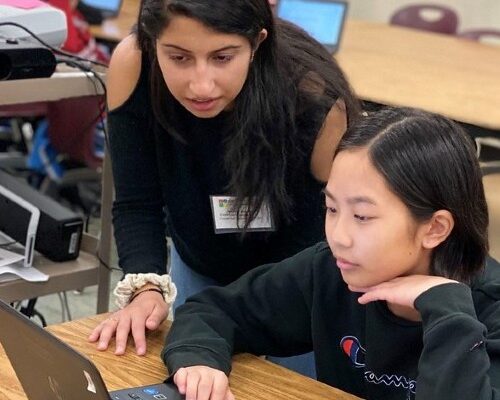
Tips & Tricks for Virtual Teaching
October 2020
After teaching lessons in a virtual format we’ve learned a bunch from what has been working and what has not in our local virtual classrooms. We’ve compiled a list of the best tips and tricks for virtual teaching.
- Set up Ground Rules Before Teaching
We like to set up some norms for the virtual classroom before teaching so that students know how they should behave and how to participate. These can vary depending on your lesson, but here are some sample ground rules:
- Ask for Student Video On if Possible for Student (ask teacher beforehand)
- Students Raise Hands for Questions/Comments
- Students Stay Muted Until Called On
- Student Participation: All Students
Students need chances to interact with the lesson that you are teaching. Try to come up with opportunities for all students to give input throughout the lesson either as a check for understanding or input for what you are teaching. Here are some ways to get all students to participate:
- Answering yes/no questions with a thumbs up or thumbs down
- Answering a sliding scale question by holding their hand up to a certain height
- Answering a multiple choice question with “reactions” corresponding to answers that you script. Ex. Smiley face means 1 day, thumbs up means 2 days
- Polls About Lesson (needs to be set up beforehand)
- Breakout Rooms for Small Group Discussions/Activities (for grades 3-5)
- Student Participation: Volunteering
Some students will want to participate beyond the interactive aspects where all students respond to a prompt, so make sure to incorporate opportunities for a student to volunteer for an activity or to answer a question in your lesson. Here are some ways that you can get a student to volunteer to help:
- Read a passage on the slide deck for your lesson
- Play a game associated with your lesson
- Answer a question about your lesson
- Give a recap of what we learned in an activity
- Report back to the class after a breakout room activity
- Spread Out Participation Amongst Students
Make sure to involve all students in the lesson so that students do not get the idea that they don’t have to pay attention to the lesson. This can be done by calling on different students. If you’re not sure how to do this, you can ask the teacher to provide some accountability to the students on the call. They should have a system for equitable participation in their classrooms such as equity sticks or calling cards.
- Physical Movement
Students, especially the younger students, can get quite antsy when they’re trying to pay attention to your virtual lesson on Zoom. I’d recommend trying to incorporate a physical activity every 15 minutes for the K-2 students and once every 30 minutes for the 3-5 students. Examples of physical movement activities
- Scavenger hunt where students try to find something in their house related to the lesson
- Stretch break with incorporated science activity such as having students take a deep breath when talking about the concept of gas
- Students act, dance, or move on their screen in some way to get them to highlight something about your lesson or respond to a question
6. Some of our schools are starting to return to in-person instruction. If you’re teaching a lesson virtually to a class that has returned to in-person instruction, here are some tips for a lesson:
- You won’t see students on their individual screens, but instead as a classroom altogether, so you likely won’t be able to know them by name.
- Ask questions like you normally would, but work out with the teacher how to call on each individual student. This actually might be a blessing in disguise as the teacher will know better who to call on for equitable talking time in the classroom.
- When students respond, have them tell you their name for a personal connection.
- Students will probably be spaced apart, so I’d try to refrain from trying anything like a “turn and talk” that would require them to get closer together than they already are spaced out.
- Have students take notes if you can so that they have something to do during the slides section of your presentation
- If your lesson incorporates any sort of activity, connect with the teacher beforehand so that they can prepare any necessary materials in the classroom for the lesson.
- Be prepared for a slight transition time between activities or possibly a needed stretch break
- Since this may be one of the first times that the teachers are meeting the students in person, so be prepared to move slowly and cut a section if you need to